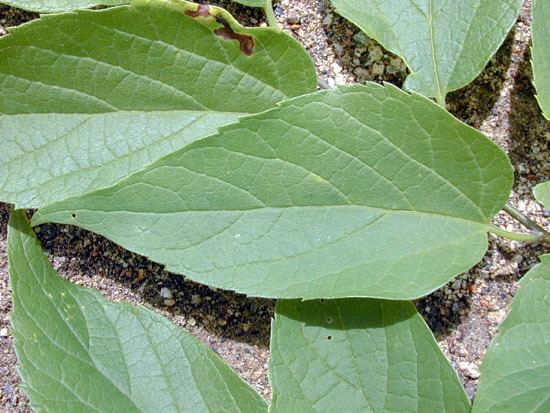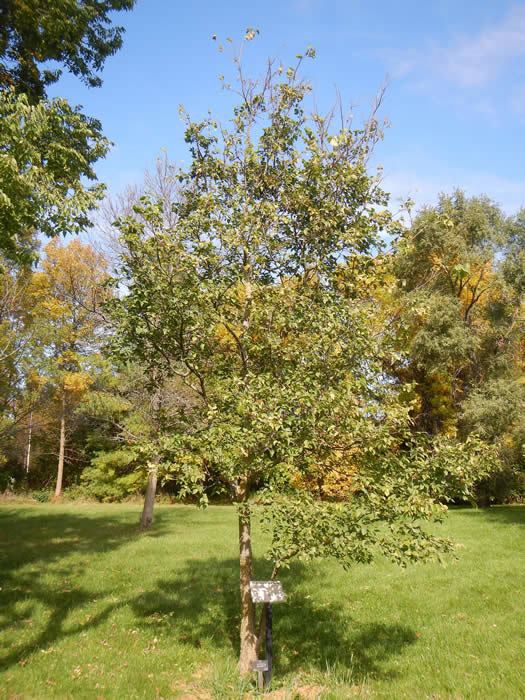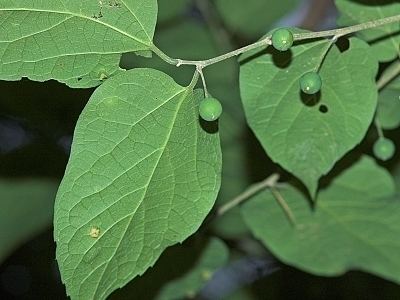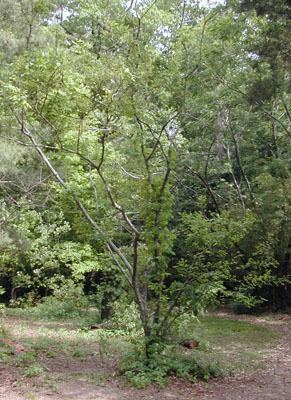Rank Species | Genus Celtis Higher classification Hackberries | |
 | ||
Similar Hackberries, Celtis lindheimeri, Celtis laevigata, Celtis tournefortii, Celtis reticulata | ||
Celtis tenuifolia, the dwarf hackberry or Georgia hackberry is a shrub or small tree 2 to 12 meters high. It is native to eastern North America, but is very uncommon north of the Ohio River. In Canada, dwarf hackberry is designated as threatened and protected under Canada's Species at Risk Act.
Contents

Characteristics

The leaves are alternate, simple, blades 5 to 7 centimeters long, and 2 to 3.5 centimeters in width, shallowly toothed, and finely hairy. The winter buds are brown and hairy, similar to those of other hackberries, but smaller, only 1 to 2 centimeters long. Terminal buds absent.

Flowers are monecious and unisexual, occurring either solitarily or in small clusters. This species is wind-pollinated and appears to be self-compatible.

The fruit is a berry-like drupe, 5 to 8 millimeters in diameter, consisting of a single stone encased within a thin, sweet mesocarp. From green, it becomes a light orange, then a dark red, then purplish-brown. This edible mesocarp is composed of a smooth outer crust and a pulpy yellow inside.
Ecology and Uses

Dwarf hackberry is shade intolerant, drought tolerant and slow-growing. It grows in dry upland habitats, including open woodlands, alvars, and sandy near-shore habitats. It is usually not found among other hackberries, although when other hackberry species occur in proximity to dwarf hackberry, intermediate forms may occur. Like other Celtis species, this species is a moderate calciphile, and is often found growing in thin soil over limestone.
Dispersal is primarily by birds although mammals are attracted by the sweet fruit and likely play a role in local dispersal.
